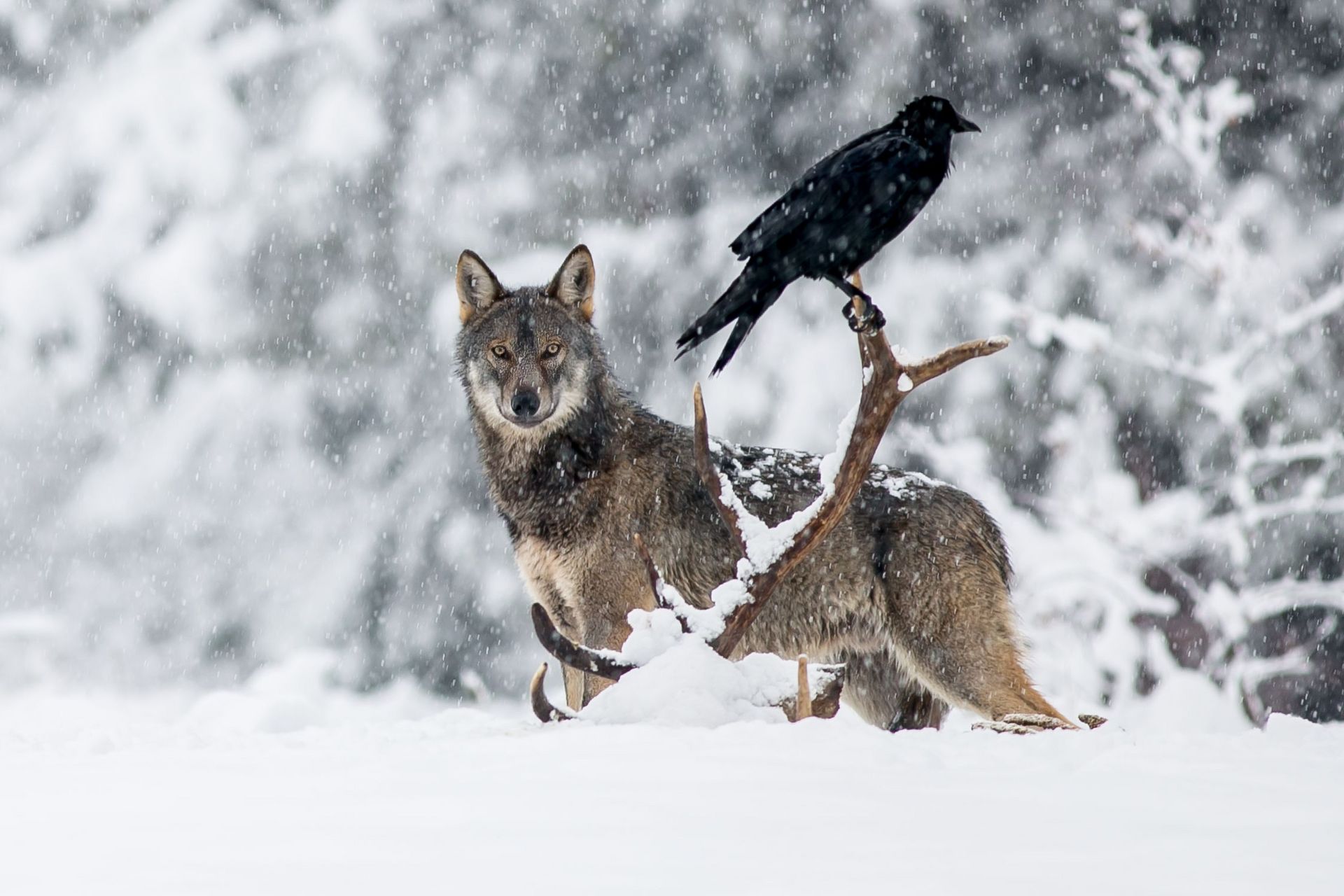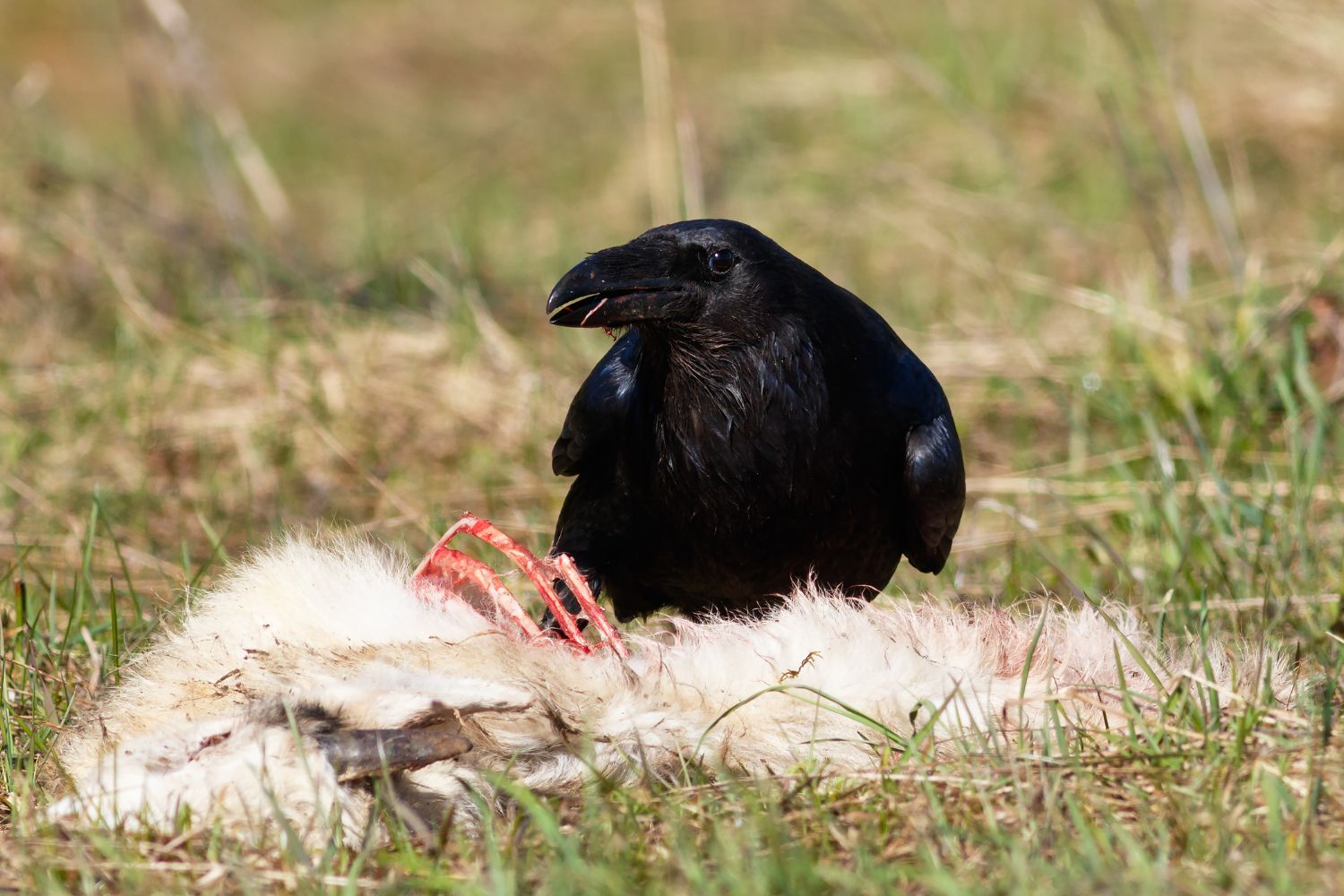
It might surprise you to learn that wolves and ravens, a predator and a scavenger, often form a remarkable alliance in the wild. For centuries, people across the Northern Hemisphere have noticed these two creatures together, even nicknaming ravens “wolf-birds” because of their close association with wolf packs. This relationship isn’t just folklore; scientists have documented it from the forests of North America to the tundra of Eurasia. When wolves were reintroduced to Yellowstone after a 70-year absence, ravens immediately returned to follow them, showing how deeply ingrained this bond is in both species. What is it about wolves and ravens that draws them together, and how do both species benefit?
A Widespread and Ancient Association

Wherever grey wolves (Canis lupus) roam, chances are you’ll find common ravens (Corvus corax) not far behind. Biologists have observed this partnership in various ecosystems for decades. In Isle Royale National Park, an isolated island ecosystem in Lake Superior, a long-term study found that ravens showed up at 99.7% of wolf kill sites during winter. In Yellowstone, observers have reported raven flocks gathering even before a hunt is over, essentially shadowing the wolf pack as an expected dinner guest.

One Yellowstone carcass was mobbed by as many as 135 ravens at once. These birds dive right in, tearing and pecking at the remains alongside the wolves. Ravens will eat their fill and even cache (store) extra meat for later, sometimes carrying off chunks of flesh while the wolves are still present.

In some cases, observers believe ravens may collectively consume more of a carcass than the wolves themselves. This is not a localized phenomenon; reports from places as far apart as Michigan, Canada, and Sweden have all described ravens routinely trailing wolf packs to feast on leftovers. It appears that this unlikely friendship has been woven into their ecology for thousands of years.
Dinner Partners: Ravens Reap the Rewards
This post is for premium subscribers
Get full access to this post and everything else we publish.
Upgrade to Premium
